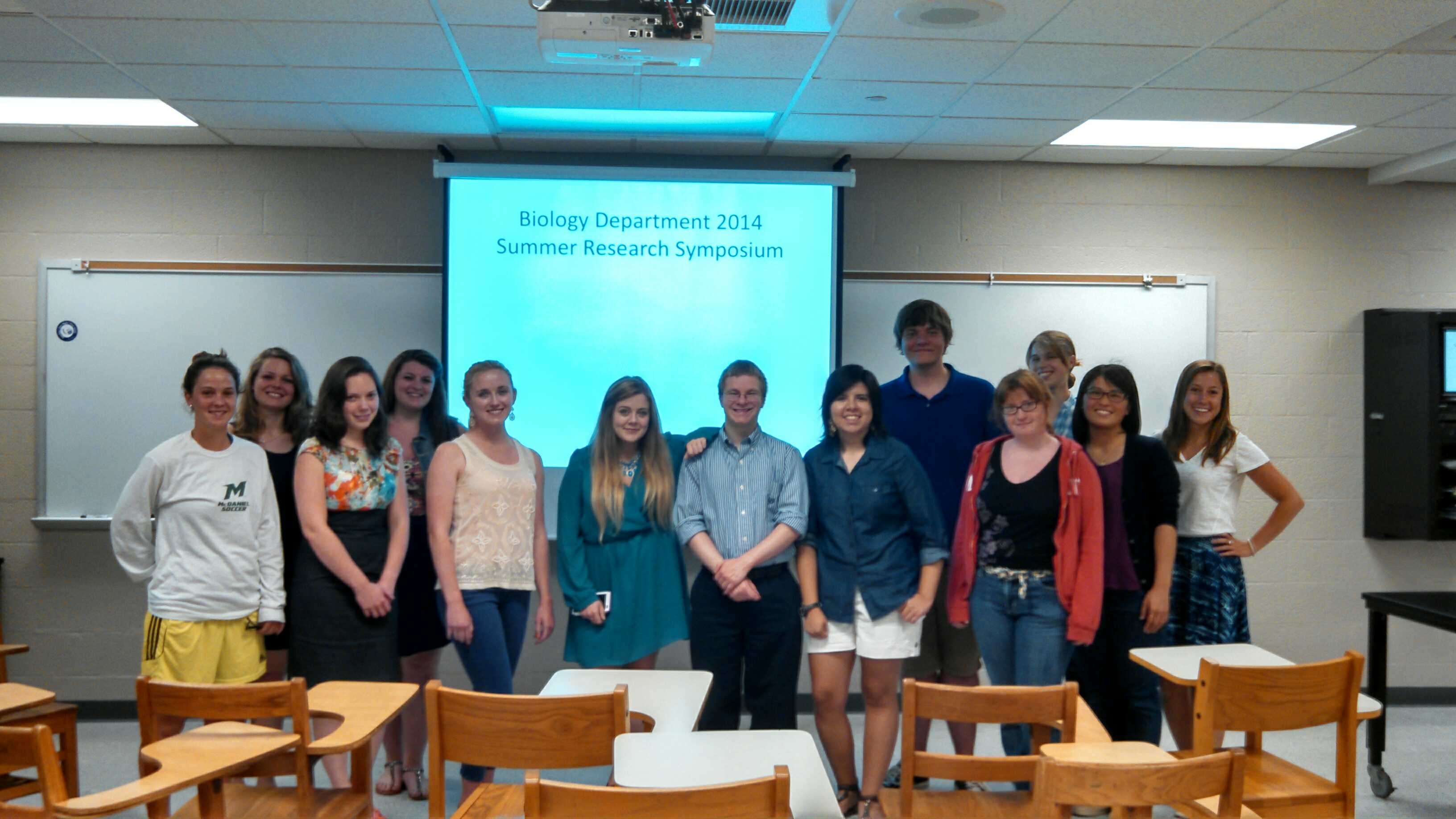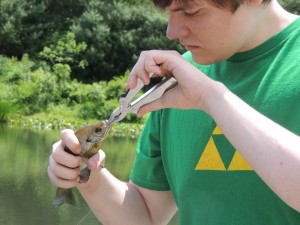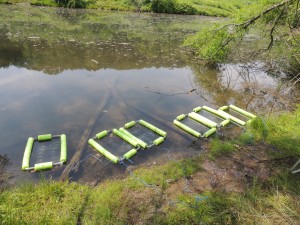Here in the biology department, one of the best days of the summer research season is the summer research symposium – I love hearing about all the cool results from all the other labs, and also seeing my own students present their work to their peers. Here they are – the Biology summer 2014 crew!
Category Archives: Jacobs Lab
Adventures in Hashawha
Ecological research is certainly full of excitement.
In our pursuit of knowledge, Meghan and I donned our waders, grabbed our nets, and traveled into the mysterious wilds of Lake Hashawha toward our target.
Our target you ask? The majestic dragonfly, or more specifically, their larvae.  These cricket-esque creatures are one of the top invertebrate predators in these types of aquatic environments, preying upon mosquito larvae, small tadpoles, and each other. Dragonfly larvae live mostly solitary lives, using substrate from their habitat to hide from predators and ambush prey.
These cricket-esque creatures are one of the top invertebrate predators in these types of aquatic environments, preying upon mosquito larvae, small tadpoles, and each other. Dragonfly larvae live mostly solitary lives, using substrate from their habitat to hide from predators and ambush prey.
Through our adventures in lake Hashawha, we encountered some of life’s most perplexing questions. Can one pull himself out of knee-deep mud pits using a friendly tree branch? Is crawling off of a dock into the mouth of an awaiting fish an evolutionarily advantageous behavior of dragonfly larvae? Do fish actually need water to survive?
Using our nets and a hint of cunning, we captured some larvae and placed them into our high-tech behavioral arenas to study activity level and hiding behavior.
With our arenas in the water and our behavioral trials commenced, we could finally begin the most annoying enjoyable aspect of our research; explaining to the countless families visiting Hashawha just what in the world we were doing.
So ‘Sexta Can Wait
[Hey, this is Meg; It says Amanda because she logged in for me.]
My project is finally underway after several issues with the set-up. I had started out with the first group of manduca in their boxes, but they decided to make like Houdini and disappear on me. So I got a new group of eggs and set them up in tubes to grow until they are too large to escape. I had to wait what felt like a week for them to hatch, but finally they are all hatched and growing. Most have reached second instar by now, and pretty soon I will be moving them to their boxes.
None have reached third instar yet, when I will take their measurements and record their responses to being handled. So right now, I am just waiting for the little darlings to grow bigger so I can move on to the next part of the project. However, today I did notice that two partnered caterpillars were going at it in their tube: the larger one chasing the smaller one around and biting him. This seems to be unusual, as I have not observed it with any of the others; usually they bite when their face randomly ends up near another caterpillar’s body, but this particular bully seemed to have ill intention. We shall see if this has any effect on either of their responses later.
Fishing & Feeding in the Larval Behavior Lab
Image
Summer is one of my favorite times at McDaniel, because this is when I put aside the demands of teaching, and the administrative chores of being a professor, and get to focus on research with students! This summer the Jacobs lab is focusing on larval behavior and feeding in two very different systems: dragonfly larvae, and tobacco hornworms. I’ll let the student researchers introduce their specific questions in later blog posts, but for now I’ll introduce the teams:
 Josh Viar and Meghan Sturgill are my field team – they are spending the summer investigating the distribution and behavior of dragonfly larvae in a range of local ponds. Their project is entirely field-based, and involves hunting in the mud for dragonfly larvae, observing their behavior for hours in large floating arenas, and sampling for fish with minnow traps and fishing poles. In other words, if you like to splash around outdoors and aren’t afraid of a little mud, they have designed the perfect summer project!
Josh Viar and Meghan Sturgill are my field team – they are spending the summer investigating the distribution and behavior of dragonfly larvae in a range of local ponds. Their project is entirely field-based, and involves hunting in the mud for dragonfly larvae, observing their behavior for hours in large floating arenas, and sampling for fish with minnow traps and fishing poles. In other words, if you like to splash around outdoors and aren’t afraid of a little mud, they have designed the perfect summer project!
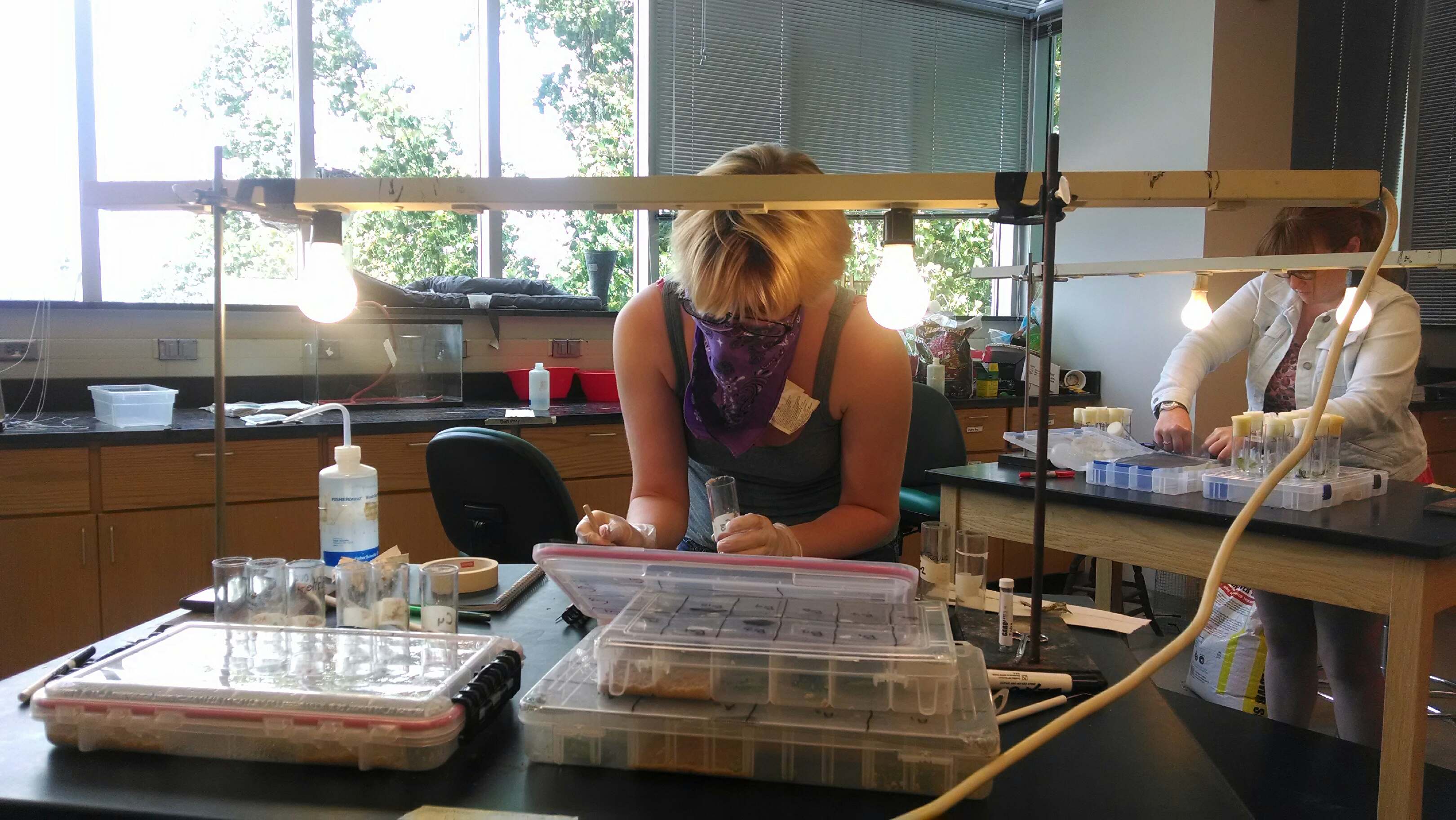 Meg Knauff and Amanda Horst are my lab team – they are spending the summer investigating the effects of diet on growth, feeding, and behavior of the tobacco hornworm, Manduca sexta. They have designed an ambitious and labor-intensive project, and are working in close collaboration to make it happen. This was a project they started in my larval biology course in the spring, and it was so interesting that we just had to continue it over the summer!
Meg Knauff and Amanda Horst are my lab team – they are spending the summer investigating the effects of diet on growth, feeding, and behavior of the tobacco hornworm, Manduca sexta. They have designed an ambitious and labor-intensive project, and are working in close collaboration to make it happen. This was a project they started in my larval biology course in the spring, and it was so interesting that we just had to continue it over the summer!
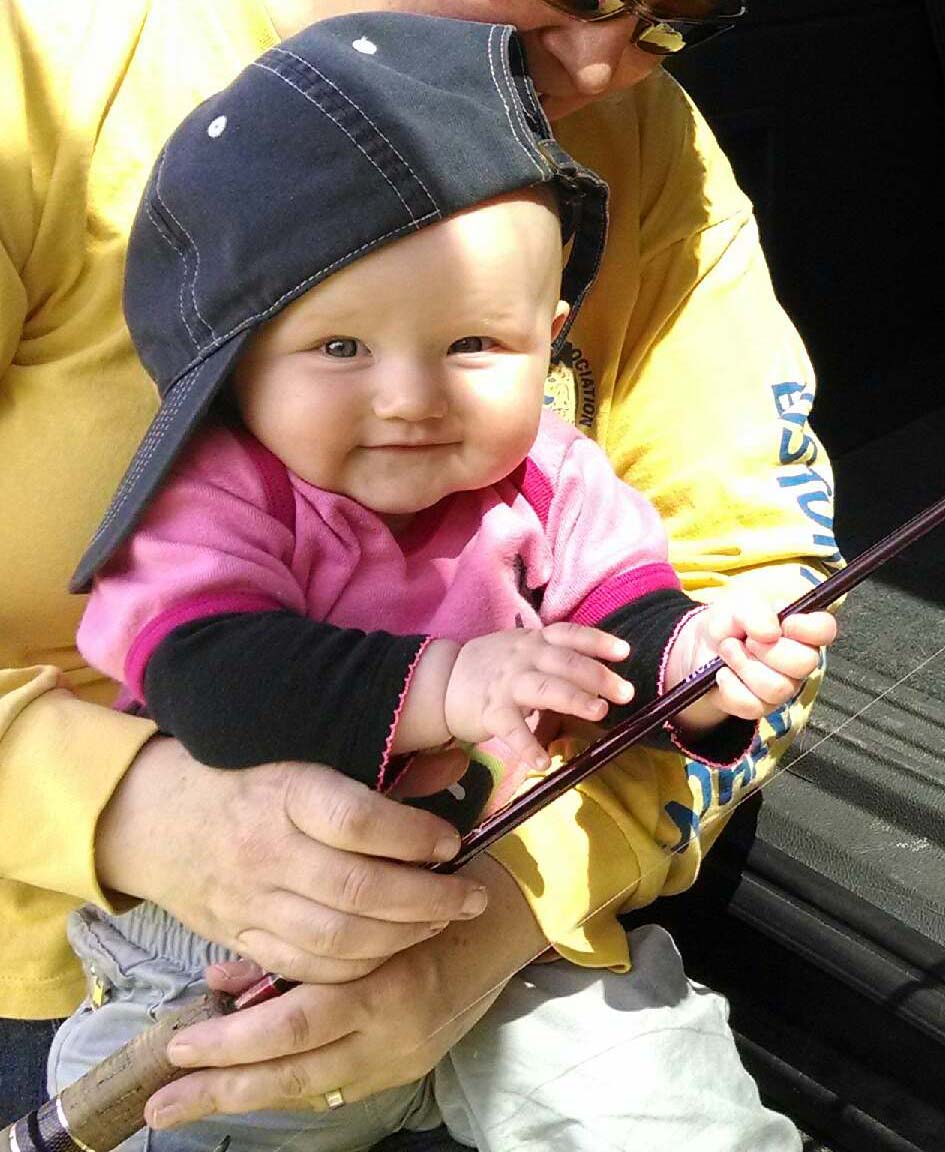 Finally, every lab needs a mascot! My daughter Greta (7 months) sometimes visits my office or comes along on field work. As a working mom, I’m grateful for the more flexible schedule of summer, which allows me to spend more time with her, and to McDaniel for being a supportive workplace for women in science! So far we haven’t put her to work fishing, but she’s ready!
Finally, every lab needs a mascot! My daughter Greta (7 months) sometimes visits my office or comes along on field work. As a working mom, I’m grateful for the more flexible schedule of summer, which allows me to spend more time with her, and to McDaniel for being a supportive workplace for women in science! So far we haven’t put her to work fishing, but she’s ready!
World Beyond the Plastic- Letter 1
Dear world beyond the plastic,
I don’t know where I am or how I got here, but it feels like I’ve been here forever. Now, some of the other Manduca sexta have gotten it into their heads that this isn’t so bad- they have tomato for dinner every night. I, on the other hand, have been fed nothing but stinky yellow goop that the oddly-shaped beings call artificial diet. I’d like to see them eat the stuff. Needless to say, I only eat when I have to.
It’s odd though, you see, because some of the others are poked and lifted away at times and then returned home to find their meals have changed. But never me. I’m just a little guy, still in my second instar and only larger than the new guys that just arrived… so I guess you could say I’m easily overlooked. Not the big guys though, they get different meals practically all the time (OK, not all the time, but like twice…) and me? Well, I’m just sitting here on my throne of artificial until the day they notice me. I digress though…
Oh yeah! I wanted to talk about the oddly-shaped beings…Well, let me tell you they’re huge and not too friendly. Odd hours, they pick us up and move us from one place to another and then back to the start. WEIRD, RIGHT?! Now, they’re getting faster though. We’re handled less, and for shorter times, but we fear for the worst. Some of our friends and neighbors have gone missing, only to be replaced by younger ones. It started with a few, but then there were many, causing whispers of a world beyond the plastic to emerge. Mmmm, but who can say for certain where they’ve gone? Maybe the oddly-shaped ones know, but they only speak to us in shrieks and high voices…morons. Anyway, the box is growing dark now so I must go. I know you can’t hear me, world beyond the plastic, but I will speak to you again.
Dreaming of you.
M. sexta in A2
-Amanda Horst
Eaton 207
Subject of Dr. Jacobs

